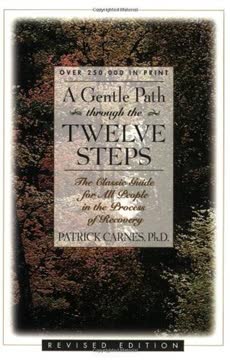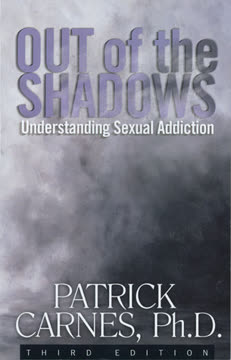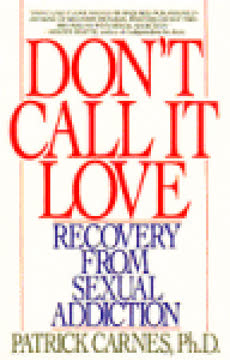Key Takeaways
1. The Twelve Steps: A Universal Recipe for Recovery
The Twelve Steps have been so useful and translatable because they tap into the essential human process of change and make that process more explicit, more understandable, and more sustainable.
Beyond alcohol. Originally developed for alcoholism, the Twelve Steps offer a profound framework for recovery applicable to a wide range of compulsive behaviors, including sex, food, money, work, relationships, shopping, gambling, and gaming. This universality stems from their focus on fundamental human change processes. The Steps provide a structured, practical, and doable path for integrating principles of recovery into daily life.
A historical landmark. The author believes the Twelve Steps will be recognized as a major intellectual and spiritual landmark, marking humanity's emergence into a diverse, global society. Their enduring relevance lies in their ability to guide individuals through life's hardest challenges, offering a personal portal to wisdom and healing. The Steps are a proven method anyone can use, regardless of their specific addiction or fellowship.
Adaptable philosophy. While the Steps form a recipe, recovery requires flexibility and learning from diverse experiences. The philosophy can evolve, and insights from different Twelve Step programs can benefit everyone. The core principles transcend specific addictions, fostering a shared journey toward growth and fulfillment.
2. Addiction: A Brain Disease That Can Be Rewired
We now know that the basic neurology of recovery involves literally regrowing our brains, creating new and healthier ways of thinking, perceiving, and acting by building new neural pathways.
Addiction changes the brain. Recent neuroscience confirms that addiction, regardless of its form, creates specific changes in the brain, laying down neural networks that reinforce compulsive behaviors. These changes affect areas responsible for decision-making, logic, attention, problem-solving, and empathy, often resulting in "stinking thinking" and impaired mental functioning. Interactive addictions are common, triggering and heightening each other through biochemical processes.
Recovery rewires the brain. Working a Twelve Step program is scientifically proven to heal the brain by building and deepening new, functional neural pathways. This physical restructuring supports healthier patterns of thinking and acting. The process requires time and consistent effort, often taking at least ninety days of sobriety for significant healing to begin in the cortex.
Safety is essential. Brain healing and successful recovery are optimally achieved when the brain feels safe. Environments of fear, trauma, or chronic stress produce chemicals like cortisol and endorphins that can become addictive, drawing individuals to drama and intensity. Twelve Step groups foster safety through belonging, empathy, and acceptance, creating a foundation for the brain to reconstruct itself.
3. Step One: Admitting Powerlessness to Begin the Journey
We admitted we were powerless over alcohol—that our lives had become unmanageable.
The hero's reluctant start. Step One is the beginning of the hero's journey in recovery, requiring the admission of powerlessness over addiction and the unmanageability of life. Like archetypal heroes, individuals are propelled into change by forces beyond their control, confronting their limitations and the chaos of their past. This admission is not about defeat but about accepting reality to begin transformation.
Documenting the story. This Step involves assembling evidence of powerlessness and unmanageability through exercises like consequences inventories, family trees, addiction histories, and abuse checklists. This documentation helps individuals understand the story of their illness, recognizing patterns learned in dysfunctional families or triggered by trauma. It moves beyond intellectual acceptance to emotional surrender.
Facing the truth. Step One requires confronting uncomfortable truths about oneself and one's history, including the impact of abuse and the denial of reality. Sharing this story with guides and others in the program is crucial, as healing occurs when the Step moves past intellectual understanding to emotional surrender. It's the first step in seeing one's story from a new, potentially hopeful perspective.
4. Steps Two & Three: Finding Sanity and Trusting a Higher Power
Came to believe that a Power greater than ourselves could restore us to sanity.
Beyond self-reliance. Steps Two and Three confront the question of trust and faith, asking individuals to believe that a Power greater than themselves can restore sanity and to make a decision to turn their will and lives over to this care. This is particularly challenging for addicts and coaddicts who have relied solely on themselves or their obsessions to cope with pain. Accepting help from others often parallels trusting a Higher Power.
Finding meaning. These Steps address the spiritual hunger that addiction attempts to fill, asking what gives life meaning. Without meaning, addiction thrives, and individuals struggle to establish priorities for balance, focus, and self-responsibility. Exercises like spiritual care inventories, loss-of-reality inventories, and reflections on paths to spirituality help clarify beliefs and identify obstacles to trust.
A personal transaction. Turning over one's will and life is a deeply personal decision, often expressed through writing a letter to a Higher Power. This process makes belief active and concrete, allowing individuals to articulate their struggles, hopes, and gratitude. It's about aligning one's life with a Higher Power, however understood, to find peace and direction.
5. Steps Four & Five: Fearless Inventory and Healing Through Sharing
Admitted to God, to ourselves, and to another human being the exact nature of our wrongs.
Facing the inner self. Steps Four and Five involve a searching and fearless moral inventory, examining the damage caused by addiction and coaddiction. This process is a grieving for the old ways of living in extremes and confronting layers of feelings: discomfort, anger, fear, shame, sadness, and loneliness. It requires acknowledging both negative behaviors and positive qualities.
Honesty brings healing. The Fourth Step inventory is a thorough self-assessment, documenting instances of avoiding responsibility, misusing anger, being paralyzed by fear, self-sabotage, shameful events, losses, and beliefs about unworthiness and self-hatred. It also includes acknowledging positive expressions of anger, respect for fear, healthy risks, pride in achievements, and learnings from sadness. This honesty is crucial for restoring integrity.
Sharing breaks isolation. The Fifth Step requires sharing the Fourth Step inventory with God, oneself, and another human being. This act breaks the isolation of loneliness and shame, creating intimacy and acceptance. Sharing allows for external perspective, support, and helps integrate the learnings from the inventory. It is often described as a turning point in recovery, anchoring individuals more deeply in the program.
6. Steps Six & Seven: Becoming Ready to Remove Defects
Were entirely ready to have God remove all these defects of character.
Letting go of survival tools. Steps Six and Seven focus on becoming entirely ready to have character defects removed and humbly asking a Higher Power to remove shortcomings. These defects include both dysfunctional survival tools learned in childhood (like isolation) and the "quirks of the addict within" (like grandiosity, pride, willfulness) that make one vulnerable to relapse. This stage is about discarding old habits and embracing new, healthy ways of being.
Transforming weaknesses. Identifying character defects involves listing them and focusing on the positive qualities that will replace them. For example, replacing dishonesty with honesty, or willfulness with humility. This transformation of weaknesses into strengths is a core aspect of recovery, requiring willingness and a shift in perspective from deprivation to learning how to do things differently.
Cultivating readiness and humility. Readiness in Step Six is about a deep willingness to change, letting go of familiar but harmful patterns. Humility in Step Seven is the act of asking for help, acknowledging that one cannot remove these defects alone. Tools like affirmations, meditations, and lifestyle inventories (like the Personal Craziness Index) support this process by promoting self-awareness, balance, and the development of new, positive habits.
7. Steps Eight & Nine: Making Amends and Finding Integrity
Made a list of all persons we had harmed, and became willing to make amends to them all.
Repairing relationships. Steps Eight and Nine focus on healing relationships damaged by addictive behavior. Step Eight involves making a list of all persons harmed and becoming willing to make amends, while Step Nine is the action of making direct amends wherever possible, unless doing so would cause further harm. This process requires courage, honesty, and a willingness to face the consequences of past actions.
Beyond "I'm sorry". Making amends is more than just apologizing; it involves acknowledging the specific harm caused, understanding the impact on others, and taking concrete actions to make up for it. This requires deep reflection on memories, thoughts, feelings, and intentions related to the harm. It's a soul-searching process that restores integrity and allows individuals to turn over remaining shame and guilt.
Finding forgiveness and peace. Completing the Eighth and Ninth Steps leads to forgiveness – both from others (where possible) and, crucially, from oneself. This process creates closure, freeing up mental and emotional energy previously consumed by worry and obsession. By having difficult conversations and making amends, individuals grow their capacity for empathy and compassion, rewiring their brains and finding profound relief and peace.
8. Steps Ten, Eleven, & Twelve: Ongoing Growth, Spirituality, and Service
Having had a spiritual awakening as a result of these steps, we tried to carry this message to alcoholics, and to practice these principles in all our affairs.
A way of life. Steps Ten, Eleven, and Twelve emphasize that recovery is an ongoing process, not a destination. Step Ten involves continuing personal inventory and promptly admitting wrongs, integrating honesty and self-responsibility into daily life. Step Eleven focuses on improving conscious contact with a Higher Power through prayer and meditation, seeking knowledge of divine will and the power to carry it out. Step Twelve calls for carrying the message to others and practicing these principles in all affairs, signifying a spiritual awakening.
Continuous self-examination. Step Ten requires daily monitoring of strengths, limitations, successes, and failures. This rigorous self-examination, supported by a strong spiritual base (Step Eleven), is essential for maintaining sanity and preventing relapse. It fosters an open system of growth and adaptation, contrasting with the rigid or chaotic systems of addiction.
Spiritual connection and service. Step Eleven encourages diverse spiritual practices to deepen connection with a Higher Power, providing direction and inner calmness. Step Twelve is the culmination, where the spiritual awakening leads to service and sharing the message of recovery. This act of giving back reinforces one's own recovery, provides perspective, and revitalizes the journey.
9. The Gentle Path: Balance, Focus, and Self-Responsibility
The spirit of the Twelve Steps is gentleness. The path is a gentle way.
Consistency over intensity. The "gentle path" emphasizes consistency and time as allies in creating new channels for life, like water wearing down rock. It contrasts with the driven, compulsive quality of addiction. Recovery is not about doing things fast or perfectly but about easing one's way through a difficult journey with patience and kindness towards oneself.
Core principles. Three themes remain constant throughout the Twelve Step process: balance, focus, and responsibility for self.
- Balance: Avoiding either-or extremes and finding a middle ground (like a rheostat).
- Focus: Living in the present, "a day at a time," rather than dwelling on the past or future.
- Responsibility for self: Living within one's own human limits and taking ownership of choices, feelings, and actions.
Countering extremes. Addicts and coaddicts often live in extremes (out of control/isolated, overcontrolled/enmeshed). The gentle path offers a way out of this extreme living towards centered living, characterized by balance, focus, and self-responsibility. This disciplined balance relies on self-limits and boundaries, which are crucial for mental health.
10. Trauma and Family History: Understanding the Roots of Addiction
Most addicts and coaddicts come from families in which addiction or compulsive behavior was present.
Learned coping mechanisms. Addiction and coaddiction often originate in families where compulsive behavior was present, leading individuals to learn dysfunctional coping mechanisms like denying feelings, wants, and needs. These patterns are passed down through rules, relationships, and systems, contributing to a sense of powerlessness over the sources of shame.
Genetic predisposition. Science indicates a genetic component to addiction; for example, children of alcoholics are significantly more likely to become alcoholics. While not a certainty, this predisposition highlights how vulnerability can be embedded in one's very cells. Understanding the family tree helps visualize these patterns across generations.
Stress and abuse. Addictions and compulsions are frequently responses to abuse, trauma, extreme fear, or chronic stress. Growing up in unhealthy environments primes the brain for addiction by creating a dependency on stress chemicals like cortisol and endorphins. Recognizing past abuse and its impact is crucial for acknowledging powerlessness and beginning the grieving process necessary for healing.
11. Self-Care: Nurturing the Body and Inner Child
Loving and nurturing your body is a metaphor for every spiritual task you face and is the primary spiritual act.
Body as a spiritual vehicle. Caring for one's physical health is presented as a fundamental spiritual discipline. Neglecting the body splits individuals off from a central source of awe and connection to creation. Physical discipline, like exercise, is a gateway to spiritual growth, teaching lessons about facing fear, letting go of control, and finding meaning in struggle.
The Healer Within. We all possess inner resources, a "Healer Within," that can mobilize belief, release energy, make sense of chaos, provide wisdom, convene community, use symbols, tell stories, provide care, channel the spiritual, lead collective processes, and witness truth. This inner healer is a powerful resource for healing the "Child Within," the vulnerable part that needs care, guidance, and nurturing.
Healing through connection. The Healer Within protects and champions the Child Within, allowing it to play, feel safe, seek guidance, and accept belonging. It helps the child trust its own spirituality by being present to the world, acknowledging suffering, and speaking truth. Healing involves nurturing, comfort, story, images, and personal connection, recognizing that the healer also needs the playfulness of the child.
12. Service: Carrying the Message and Deepening Recovery
By your example, you will influence others, whether you intend to or not.
Giving back. The Twelfth Step calls for carrying the message to others and practicing the principles in all affairs. This act of service is a significant part of the program, deepening one's appreciation, reinforcing personal sobriety, and revitalizing recovery efforts. Sponsoring new members is a key way to practice this Step, requiring willingness to understand their story, provide emotional support, and help them focus on the program basics.
Modeling recovery. As a sponsor or simply by living the program, individuals serve as role models, influencing others through their actions. This requires clarity about one's own definition of sobriety, which evolves beyond mere abstinence to a positive statement about what one embraces in life. Sharing personal standards of sobriety helps both the individual and those they help.
Continuous renewal. Recovery is never complete, and there will be times when the program feels dry. Revitalizing recovery involves concrete actions like service work, participating in fellowship events, joining other programs, changing meeting formats, or finding a new sponsor. It also requires exploring resistance, noting increases in addictive behavior, looking at larger life patterns, leaning into change, and revisiting the Steps.
Last updated:
FAQ
1. What is "A Gentle Path Through the Twelve Steps" by Patrick J. Carnes about?
- Comprehensive Recovery Guide: The book is a structured workbook designed to help people with various addictions and their loved ones work through the Twelve Steps of Alcoholics Anonymous.
- Inclusive Approach: It addresses not only alcohol and drug addiction but also compulsive behaviors like sex, food, gambling, work, and codependency.
- Updated with Science: The latest edition integrates neuroscience and psychological research to explain how recovery rewires the brain.
- Practical Exercises: It offers inventories, affirmations, meditations, and journaling prompts to guide readers through each step in a gentle, self-compassionate way.
2. Why should I read "A Gentle Path Through the Twelve Steps" by Patrick J. Carnes?
- Universal Application: The book is suitable for anyone struggling with addiction, compulsive behaviors, or codependency, regardless of the specific issue.
- Gentle, Nonjudgmental Tone: Carnes emphasizes kindness, patience, and self-acceptance throughout the recovery process.
- Structured, Actionable Tools: Readers receive concrete exercises, inventories, and affirmations to support real change.
- Integration of Modern Science: The book explains how the Twelve Steps align with current neuroscience, making recovery more understandable and relatable.
3. What are the key takeaways from "A Gentle Path Through the Twelve Steps"?
- Addiction Is Broad: Addiction includes not just substances but any compulsive, self-destructive behavior, and often multiple addictions coexist.
- Recovery Is a Process: Healing is ongoing, requiring honesty, self-reflection, and spiritual growth, not just abstinence.
- The Brain Can Heal: Working the Twelve Steps literally helps rewire the brain, creating healthier patterns and restoring choice.
- Community and Support Matter: Recovery is most successful when done with the help of sponsors, groups, and spiritual guides.
4. How does Patrick J. Carnes define addiction and recovery in "A Gentle Path Through the Twelve Steps"?
- Addiction as Compulsion: Carnes defines addiction as any behavior that becomes compulsive and unmanageable, not limited to substances.
- Recovery as Transformation: Recovery is seen as a journey of personal transformation, involving spiritual, emotional, and behavioral change.
- Powerlessness and Unmanageability: The first step is admitting powerlessness over the addiction and recognizing the chaos it causes.
- Ongoing Process: Recovery is not a one-time event but a lifelong commitment to growth, balance, and self-responsibility.
5. What makes Patrick J. Carnes’ approach to the Twelve Steps unique in "A Gentle Path Through the Twelve Steps"?
- All-Addiction Focus: Carnes adapts the Twelve Steps for all types of addictions and for coaddicts (codependents), making the program widely accessible.
- Neuroscience Integration: He explains how the Steps help heal the brain, using current scientific understanding.
- Emphasis on Gentleness: The workbook encourages a gentle, non-compulsive approach to recovery, countering the driven mindset of many addicts.
- Practical Workbooks: The book is filled with structured forms, inventories, and exercises to personalize the recovery journey.
6. How does "A Gentle Path Through the Twelve Steps" incorporate neuroscience and psychology into recovery?
- Brain Rewiring: The book explains that addiction creates harmful neural pathways, and working the Steps helps build new, healthier ones.
- Trauma and Safety: Carnes discusses how trauma and lack of safety contribute to addiction, and how group support creates the safety needed for healing.
- Inner Observer Development: The Steps foster mindfulness and self-reflection, helping individuals develop an “inner observer” to monitor thoughts and behaviors.
- Scientific Validation: Modern imaging and research are used to validate the effectiveness of the Twelve Step process.
7. What are some of the key exercises and tools provided in "A Gentle Path Through the Twelve Steps"?
- Inventories and Checklists: The book includes detailed inventories for consequences, family history, abuse, and personal craziness to increase self-awareness.
- Affirmations: Each step is supported by affirmations to reprogram negative self-talk and build self-worth.
- Meditations and Visualizations: Guided meditations and fantasy exercises help readers process emotions and envision change.
- Daily Practices: Tools like the Personal Craziness Index and daily inventories help maintain balance and prevent relapse.
8. How does "A Gentle Path Through the Twelve Steps" address coaddiction and codependency?
- Inclusive Language: Carnes uses “coaddict” and “codependent” interchangeably, recognizing the compulsive patterns in those close to addicts.
- Separate Inventories: The workbook provides specific exercises for coaddicts to examine their own powerlessness and unmanageability.
- Parallel Recovery: It emphasizes that coaddicts need their own recovery process, not just support for the addict.
- Family Systems: The book explores how family dynamics and generational patterns contribute to both addiction and codependency.
9. What is the role of spirituality and a Higher Power in "A Gentle Path Through the Twelve Steps"?
- Broad Spirituality: The book encourages readers to define a Higher Power in a way that is meaningful to them, not limited to traditional religious concepts.
- Spiritual Inventories: Exercises help readers explore their beliefs, obstacles, and experiences with spirituality.
- Daily Spiritual Practice: Carnes advocates for regular meditation, prayer, and reflection as essential to ongoing recovery.
- Meaning and Purpose: Steps Two and Three focus on finding meaning, trust, and connection beyond oneself as a foundation for change.
10. How does "A Gentle Path Through the Twelve Steps" help prevent relapse and support long-term recovery?
- Lifestyle Balance: The Personal Craziness Index helps readers monitor daily habits and warning signs of imbalance that can lead to relapse.
- Ongoing Inventory: Step Ten and daily check-ins encourage continuous self-examination and prompt correction of mistakes.
- Community Engagement: The book stresses the importance of meetings, sponsorship, and service to maintain accountability and connection.
- Embracing Inconvenience: Carnes distinguishes between partial, convenient, and “inconvenient” (full) recovery, urging readers to accept ongoing growth and discomfort as part of lasting change.
11. What are some of the best quotes from "A Gentle Path Through the Twelve Steps" and what do they mean?
- “The spirit of the Twelve Steps is gentleness. The path is a gentle way.” — Emphasizes the importance of self-compassion and patience in recovery.
- “Addiction robs much of our power of choice by hijacking our brain, over and over, until we become powerless over our addiction and our life becomes unmanageable.” — Highlights the neurological basis of addiction and the need for structured recovery.
- “Acceptance and surrender are how we become open to healing.” — Suggests that true change begins with letting go of control and embracing vulnerability.
- “The Twelve Steps form a recipe, but following this recipe is not always easy or comfortable. Pain and hard work are inevitable on the path to serenity.” — Reminds readers that recovery is challenging but ultimately rewarding.
12. How can groups or individuals best use "A Gentle Path Through the Twelve Steps" by Patrick J. Carnes?
- Group Study Options: The book can be used in various group formats, such as post-meeting mini-groups, write-and-share meetings, or focused study groups.
- Accountability and Support: Group use fosters accountability, encouragement, and deeper sharing, which are vital for progress.
- Flexible Structure: Individuals can work through the book at their own pace, revisiting exercises as needed for ongoing growth.
- Integration with Therapy: The workbook can be used alongside professional therapy or as a supplement to other Twelve Step programs for a more comprehensive recovery experience.
Review Summary
A Gentle Path Through the Twelve Steps receives mostly positive reviews, with readers praising its effectiveness for various addictions and personal growth. Many find it helpful for understanding the 12 steps, though some note its religious undertones. The workbook format is appreciated, but some find it challenging. Reviewers recommend it for those in recovery and anyone seeking personal development. However, a few critics suggest it may be too intense for newcomers to recovery and sobriety.
Similar Books
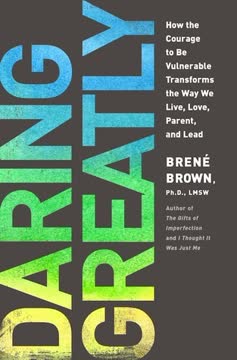

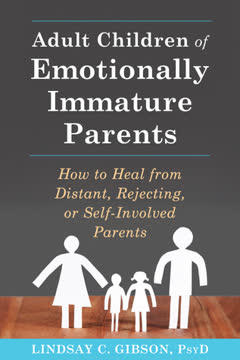
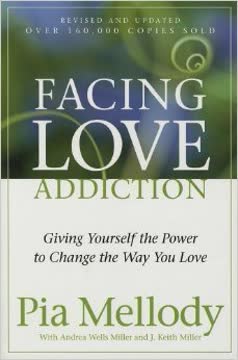
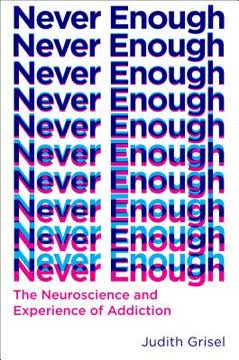
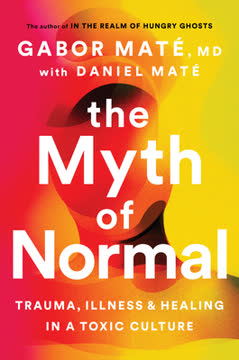
Download PDF
Download EPUB
.epub digital book format is ideal for reading ebooks on phones, tablets, and e-readers.
